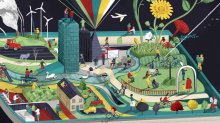Building a Sustainable Future—One Classroom at a Time
A mini-golf course, a canoe trip down the local river, a discussion about environmental justice. Here’s how schools are teaching students about environmental science.
Your content has been saved!
Go to My Saved Content.Seventh-grade science teacher Tina McMahon was teaching a unit about the human impact on the local watershed in Ipswich, Massachusetts, when a student told her about a conversation he’d had with his dad over lawn fertilizer. “Could we just not [use it] this year and see what happens?” the student says he asked his dad.
These kinds of conversations—and changes to behavior—can happen when you teach students how science directly impacts their lives, says McMahon, who spearheads a number of environmental education initiatives at Ipswich Middle School.
An increased sense of civic engagement is only one of many benefits that environmental education (EE) brings to students, according to research. One analysis found that because the subject taps into students’ natural curiosity about the environment—which students can see and experience directly outside of the classroom—it connects their learning to a larger purpose and motivates them to dive deeply into disciplines like science and social studies.
Now, more than ever, environmental education should garner more attention in the classroom, say proponents. More frequent, extreme natural disasters like hurricanes and wildfires have directly impacted people’s lives and catalyzed a surge in global advocacy efforts to protect the environment. Students, too, are signaling interest and passion in areas of inquiry that overlap with the physical and biological sciences, social policy, and ethics. Since 2018, hundreds of thousands of young people have joined a school climate strike led by activist Greta Thunberg, demanding not just small changes to our behaviors but more influential, systematic shifts to policy and practices.
Yet even with the many benefits of environmental education, teachers face challenges bringing it into their classrooms. Limited training and up-to-date, relevant teaching resources have created pedagogical barriers implementing EE, according to Jennifer Seydel, executive director of the Green Schools National Network, a nonprofit advocacy organization that promotes sustainable K–12 schools nationwide. There is still not a mandate for environmental education in many states, even though 19 states and the District of Columbia are in the process of implementing their environmental literacy plans as of 2019.
“Teachers need to understand how to bring that back into their own communities, but oftentimes schools and curriculum do not give time for that to happen,” says Seydel.
Whether it’s protecting roadways from rising sea levels or discussing environmental justice, many schools are taking bold action to educate kids about the importance of protecting the environment. Edutopia recently talked to four exemplary schools that have successfully integrated environmental education into their curriculum, and here’s what we learned.
Ipswich Middle School, Ipswich, Massachusetts (rural, 6–8)—Understanding the Local Environment
When piping plovers flock to the popular Crane Beach in Ipswich each spring, they have their own dedicated section of sand to use for nesting, thanks to students at Ipswich Middle School. To educate the public about the instrumental role these shorebirds play in maintaining the town’s ecosystem, students suggested creating signs and infographics to be posted on the boardwalk at the beach.
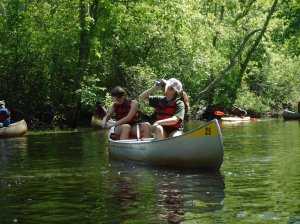
Bringing awareness to the local environment is a guiding principle that drives environmental education at the school, says teacher Tina McMahon. “It’s not only about helping [students] educate and make connections to other people; it’s about helping them understand their own environment and how they can add to the sustainability of where they live.”
Students come into the seventh grade with a basic ecology background and then dive into a water quality unit where they measure the salinity, dissolved oxygen, and pH of the Ipswich River, which has made the endangered rivers list three times, including this year. Students also take a two-day canoe trip to examine local soil, plants, animals, and macroinvertebrates—all of which is indicative of the health of the river—and learn about ways to conserve the natural habitat.
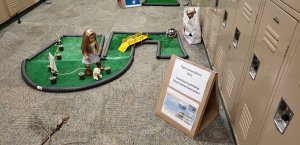
But environmental education at Ipswich isn’t just a science-only undertaking. In an innovative project created by the math department, seventh graders created a functioning mini-golf course using plastic turf that can be reused year after year. To design the layout, students investigated and applied the principles of topography and used mathematical equations to calculate the dimensions for and the distance between the golf holes. In addition, they put up placards around the course with information about the harmful impact of pesticides on wetlands and ways to protect nearby native habitats.
Mount Desert Island High School, Bar Harbor, Maine (rural, 9–12)—Building Institutional Legacy for Climate Action
A scenic coastline community and tourist hub for Acadia National Park, Bar Harbor, Maine, seems like an idyllic place to live. But according to students at Mount Desert Island (MDI) High School, their community is in a state of climate emergency.
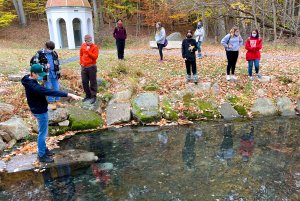
With a six-foot sea level rise by 2100 projected by the National Oceanic and Atmospheric Association, students studied the degree of ocean expansion and estimated that the school will have to spend $11 million just to update flooded roads, according to their recent presentation at a local school board meeting. Warming waters are also putting the $1 billion lobster industry in the area at risk, students explained, since lobsters will start migrating north in search of cooler waters.
The students’ advocacy is part of a larger effort made at the high school to get youth passionate and engaged in protecting their environment—especially locally. As part of the school’s competency-based curriculum, students can take a clothing construction course where they look into manufacturing of natural and synthetic fibers and how these materials can impact the environment. A partnership with the Mount Desert Island Biological Laboratory allows students to participate in an ongoing place-based citizen science investigation and data literacy project on arsenic levels in local wells.
“The idea of sustainability for us is social justice,” says Julie Keblinsky, dean of curriculum at Mount Desert Island High School, explaining the school’s overarching philosophy. “So part of our environmental education is not just ‘reduce, reuse, recycle,’ but where is the environment inequitable for people of color and [those in] impoverished areas?”
Indian Community School, Franklin, Wisconsin (suburban, pre-K–8)—Connecting With the Homeland
At Indian Community School (ICS) in Franklin, Wisconsin, students are thinking about what they want the world to look like seven generations from now.
Serving Native American students in the Milwaukee metropolitan area, ICS focuses on teaching kids about what it means to be living in an urban Native American setting, says Jason Dropik, the head of school and a member of the Bad River Band of Lake Superior Chippewa. The school, which has been in operation for 50 years, represents all tribes from Wisconsin, along with other federally and non-federally recognized tribes beyond the state’s borders.
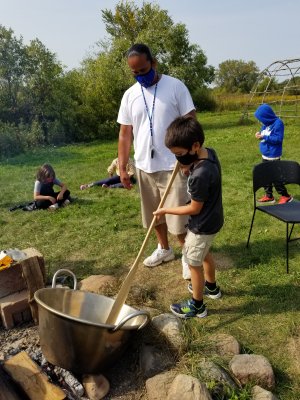
Food sovereignty within the Indigenous context is a major focus of the school’s environmental curriculum, says Dropik, so students learn about the history of gaming and fishing as a tool for survival, along with ways to cultivate healthy, sustainable food sources.
“[We want] to provide for our families in ways where we don’t have to use processed foods, things that have chemicals in them that have been detrimental to our tribal communities,” Dropik explains, referencing obesity rates, diabetes, and other health concerns.
For more than a decade, fourth-grade students at the school have been keeping a garden—for example, growing corn, beans, and squash, the “three sisters” or sacred foods that are considered sustainers of life in Oneida culture. They have also planted sugar maple trees and learned about harvesting sap to make maple syrup and maple sugar, the origin of which traces back to the Algonquin tribes of the northwestern United States and western Canada.
Students have a chance to connect directly with tribal communities too. They have traveled to Menominee nation in Keshena, Wisconsin, and planted wild rice along the banks of a local river, while learning about the migration stories of tribal communities that once lived there.
“We want to give them that context so that if they choose to engage in learning more about that as they get older, they have that opportunity,” says Dropik.
SEEQS: The School for Examining Essential Questions of Sustainability, Honolulu, Hawaii (urban, 6–8)—Looking at the Big Picture
“Everything in our school is designed towards developing stewards of planet Earth and healthy, effective citizens of the world,” says Buffy Cushman-Patz, the executive director of SEEQS.
In addition to regular classes, every student at the school enrolls in a yearlong, project-based, interdisciplinary Essential Question of Sustainability (EQS) course, each designed around an essential question relevant to Hawaii. Past questions have included, “How do humans and the oceans impact each other?” and “Why harness energy, and how?”
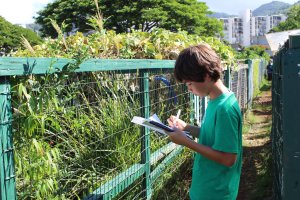
Teachers of different disciplines, such as math and English, support students in each step of the student’s project, whether to use geometry to calculate measurements of an irrigation system or to collect and analyze water quality data using basic statistics.
When students looked into “What does it take to feed a community?” for example, they first set the goal of feeding 100 people by the end of the semester. They started by transforming a parking lot into a field to grow different vegetables, learning how to pickle things and make vegan meals, which are real-world applications of what they learn in multiple subjects.
In the past, student project work has also included the construction and maintenance of rain gardens, raised garden beds, aquaponics, and composting systems on campus, as well as regular conservation work at the nearby Manoa-Palolo stream. These projects culminate in student-designed portfolios and a defense of the project to a panel that includes members of the community, such as experts in energy conservation and sustainable food production.
“Ultimately, we need students to understand the complexity of these environmental issues that we’re facing as a planet and as a society,” says Cushman-Patz. “When we try and simplify it, we do an injustice to the complexities of the problems and to the capacity of middle school students to understand them.”
